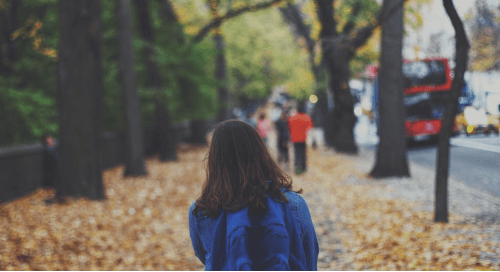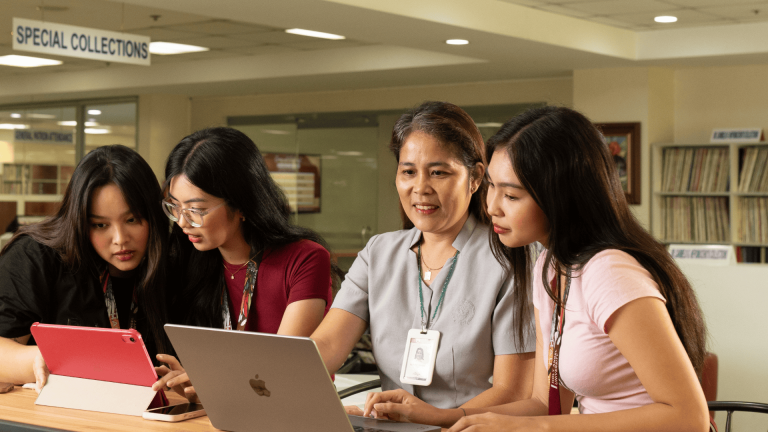
As we emerge blinking into the sunlight and begin to gather up the traces of pre-isolation life, perhaps we should ask what we can take away from this experience. Some initial conclusions are here:
Lesson 1: School is absolutely necessary
Pretty much everyone, from Prime Minister to pupils, considers school, of the pre-COVID-19 variety, to be absolutely vital. In addition to the education piece, school gives children a critical grounding in socialisation, group dynamics, basic citizenship – the list goes on. It also allows, (as many parents now deeply appreciate) adults to go to work and help to sustain the economy. Schools, with their classrooms and corridors and water bubblers, are more or less indispensable to our way of life.
Lesson 2: Fully remote learning was tough, if we're being honest
We all tried hard, but there were challenges. No one was prepared for this situation – homes lacked space, furniture and equipment (as the massive spike in sales of home office supplies will testify). Some schools initially tried to replicate established teaching patterns by streaming lessons back-to-back for six hours a day. Teachers, expert at wrangling packed classrooms, had virtual lessons inadvertently sabotaged by their own kids, partners and pets, and by the fact that virtual, despite being clever, just doesn’t work the same as physical. There were tech glitches and breakdowns in communication and there were kids who fell behind, and there were kids who couldn’t always turn up. The virtual couldn’t fully replicate the physical. But:
Lesson 3: We did pretty well under the circumstances
It’s worth emphasising that with minimal warning, and without much of a plan or precedent, we shifted from physical to virtual education environments over the course of a few days. We actually did quite well, considering we haven’t done this before. Scott Pulsipher makes the point that online shopping offered a far from perfect experience for both consumer and retailer when it first began. Now it’s easy, accepted and for many, a good thing. Remote learning is probably something a lot of schools only dabbled with prior to COVID-19. (Well, we sure ain’t dabbling now.)
Under precisely the same conditions, the technology we all used, and the infrastructure upon which it runs also performed well. The tools are there, and have largely survived their own baptism of fire. Significantly, technology doesn’t stay still, and new ideas are bubbling up all over the place, to address gaps identified during lockdown, and to anticipate what may come.
Lesson 4: Remote learning has its fans
While many children have been inconvenienced by isolation and can’t wait to resume school as normal, there are a few who have actually thrived while learning at home. Despite Herculean efforts, the traditional classroom environment doesn’t always suit everyone. The shy, the bullied, those with learning difficulties, and those who simply don’t quite fit into the classically-sanctioned mould – a few of these young people have done better during lockdown than they ever did in class, and there are stories of children who would prefer not to go back to the classroom. Are there things we can take from this? Differentiated, or personalised learning is something that’s made easier with some of the technology we’ve been using during lockdown, and it can help to maintain student engagement across a much broader range of ability and aptitude. Many students with specific learning needs already leverage this kind of technology to advantage. Maybe there are experiences that can be used to improve outcomes, and maybe some elements of remote learning, with which we’ve recently become so adept, have a place in the classroom?
Lesson 5: Virtual and physical, the future is bright
Having undergone a high-stress crash course in remote education, teachers have fine-tuned a number of strategies to keep the cat off the keyboard and the partner out of shot, as well as to engage geographically dispersed students subject to the distractions of their own bedrooms or kitchens (and possibly their own cats). These were hard-won skills, and it would be wonderful to extract some extended value from them as we return to the classroom.
Maybe it doesn’t have to be offline versus online - perhaps it can be offline plus online. An opportunity to exploit both lies within Blended Learning programs - not unheard-of prior to COVID-19 - whereby students can exercise some of the control and responsibility they experienced while online at home, but with a suitable level of in-person guidance. Lockdown also presented a surge of mutually supportive advice, tips and tricks from educators. Perhaps this level of communal exchange can continue into the post-lockdown world as we grapple with desk disinfectant and put up those posters on hand-washing.
Keep communicating. Keep learning.
Related Content
 new_and_next_apac_june_2025.png
new_and_next_apac_june_2025.pngBlogs
 meet-canvas-apac-team-christopher.png
meet-canvas-apac-team-christopher.pngBlogs
 philippines_ched_cmo.png
philippines_ched_cmo.pngBlogs
